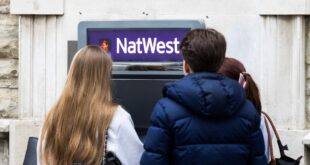Certain types of planes would be banned from landing or leaving at night and more residents could get sound insulation in new plans to combat noise from East Midlands Airport. The airport, the UK’s centre for freight, on the outskirts of Castle Donington in Leicestershire, is drawing up a noise action plan to cover 2024 to 2028 and is proposing several sweeping measures which will significantly impact residents and airline companies alike.
The facility, part of the Manchester Airport Group, is looking to put outright bans on three categories of the noisiest planes flying at nighttime (QC4, QC8 and QC16 ratings), affecting hundreds of flights. Meanwhile, penalties to airlines flying louder planes at night will be increased in a bid to further reduce this issue, acting as a disincentive.
The airport will also allow residents who have previously benefited from home insulation upgrades paid for by the site since 2002 to reapply after 20 years for further improvements. It has disclosed that it has spent nearly £3.2 million improving noise insulation on 890 homes since 2002, with £135,000 spent on 50 homes in the past year.
Read more: East Midlands Airport named best in the UK for flight delays with Midlands neighbour the worst
Depending on the average nighttime noise outside of affected homes, homeowners could gain upgrades ranging from up to £3,000 to £10,000 – with the worst affected to receive offers from the airport to buy their properties from them. The airport says it will ensure that all 65 homes in a specific area of Kegworth, Leicestershire, affected by “vortices” – an air vortex from aircraft take-off – will have “vortex-resilient roofs” installed and paid for by the airport.
It says it has spent £689,000 already on improvements to these 65 homes and 41 of the properties have had new roofs installed in the past five years, with £529,000 specifically on the vortex-resilient roofs, committing to reroofing all homes on its waiting list. Accounts for the airport detail that it made a profit before tax of nearly £61 million in the past financial year.
The airport will be boosting the amount of money it pays into the East Midlands Airport Community Fund each year to £55,000. It says nearly £2 million has been awarded to 1,685 community projects through this fund since 2001.
Noise from the airport, while based in Leicestershire, has a much wider impact due to its numerous flight paths, affecting areas of Derbyshire and Nottinghamshire. The western routes impact Melbourne, Ashby and Barrow upon Trent while eastern routes impact Long Eaton, Ockbrook, Trowell, Kimberley, Barrow upon Soar and East Goscote along with numerous other areas in between.
The airport says that legislation dictates that its nighttime noise must not exceed 55 decibels for more than 16km around the site. This level of noise currently extends to around a 12km radius of the airport but is forecast to reach 14km by 2025.
Airport bosses say it has a freight capacity of 450,000 tonnes a year, forecast to reach 700,000 by 2040, with 9,000 people working across 100 companies on the site, including DHL, UPS, FedEx and Royal Mail, generating £723 million in value-added to the regional economy, and transporting 4.7 million passengers a year. The airport says annual airport movements were at 77,000 in 2018 and are set to hit 113,000 by 2040.
Fines for airlines not meeting new “Chapter 14” noise standards would currently affect 79 per cent of all nighttime flights from the airport, with just 21 per cent meeting the standard in 2022. The largest impact on the table appears to be the planned ban on QC4-rated aircraft flying at night.
Since the pandemic the number of these older larger and louder planes has increased due to the shortage of vehicles and the need to meet demand for increased online shopping, the airport says. In 2018 there were no nighttime flights from QC4-rated aircraft, such as the Boeing 747-400, but that has since increased to 315 in 2022 – with a ban now proposed from January 1, 2024.
Fines for QC8 and QC16 aircraft already stood at £5,500 and £11,000 respectively and between 2018 and 2022 none of this type of vehicle flew at nighttime. The current charge for QC4 aircraft is £3,028 per flight.
Penalties for aircraft which are too noisy to fly at night (outside of those banned outright) would be paid to the airport’s community fund – they will all be charged £3,028 per flight under the new plans. Existing measures had already fined flights £825 for breaching noise restrictions 6.5km around the airport by a decibel and £165 for every additional decibel, with 43 violations since 2019.
On the nighttime bans for QC4, QC8 and QC16, the airport says: “An operational ban means these aircraft movements would not be able to land or take off from East Midlands Airport during the night period, even if delayed. We believe the impacts to airlines of this ban will be minimal, but it will have a benefit to communities that are overflown by ensuring these noisiest movements cannot take place at night.”
Sound insulation would be paid out in different bands, depending on the average nighttime noise outside of affected properties. Zone A is for an average nighttime noise level of 55-60 decibels, able to have improvements up to £3,000; Zone B is for 60-66 decibels, eligible for up to £5,000; Zone C is for 66-69 decibels, eligible for up to £10,000; and Zone D is for above 69 decibels and above and eligible for an offer to purchase the property.
Affected homes must have been built before 2002, the airport says, and the eligible upgrade costs will increase in line with inflation year on year. The airport is consulting on the potential changes, closing on Monday, July 31, and you can take part by visiting this website.
We send out the biggest stories in an email every day. Sign up for the main Derbyshire Live newsletter here.
Read more:



